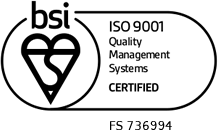19ENG05: High throughput metrology for nanowire energy harvesting devices
A Joint Research Project within the European Metrology Research Programme EMPIR
Semiconductor nanowires, tiny cylindrical crystals with diameters of about around 100 nm and relatively long lengths, can be engineered to produce small amounts of electricity. Scaled-up, these materials potentially could contribute to Europe’s requirements for zero-carbon sourced electricity. This might be achieved by boosting solar photovoltaic energy conversion efficiencies, or from harvesting energy sourced from temperature gradients and mechanical deformations. For practical use, nanowires are fabricated into arrays, sized up to several metres squared. Critical to understanding economic feasibility is understanding relevant energy conversation cost and benefit calculations, including how the properties of individual nanowires relate to overall device performance. The EMRP ENG02 project could not establish a quantitative link for electromechanical energy harvesters, as the measurement methods then available were not accurate enough. Methods for ensuring quality control in scaled-up production are also acknowledged as insufficient for the task.
The project will devise new measurement methods to better understand the performance of energy harvesting devices based on vertical nanowires, including in solar cells. It will also devise methods and models to support the production of nanowire devices. New reference materials, calibration standards, and prototype measurement technologies will be produced, and measurement certainties for doping concentration and thermal conductivity measurements demonstrated. The technologies and methods developed in the project are expected to point to new ways to improve the performance and quality of nanowire energy harvesting devices, so encourage support for this approach to supporting Europe’s future demands for renewable energy.
Partners include:
Participating EURAMET NMIs and DIs, and industrial and academic partners
- Physikalisch-Technische Bundesanstalt (PTB)
- Cesky Metrologicky Institut (CMI)
- Dansk Fundamental Metrologi A/S (DFM)
- Central Office of Measures (GUM)
- Istituto Nazionale di Ricerca Metrologica (INRIM)
- Laboratoire national de métrologie et d’essais (LNE)
- VSL B.V. (VSL)
- Aalto-korkeakoulusäätiö sr (Aalto)
- Centre National de la Recherche Scientifique (CNRS)
- Electrosciences Limited (ELECTRO)
- GETec Microscopy GmbH (GET)
- Politechnika Wrocławska (PWR)
- The Provost, Fellows, Foundation Scholars and the other members of Board, of the College of the Holy and Undivided Trinity of Queen Elizabeth near Dublin (TCD)
- Technische Universitaet Braunschweig (TUBS)
- Universidad Autonoma de Barcelona (UAB)
- CONCEPT SCIENTIFIQUE INSTRUMENTS (CSI)
- Ecole Centrale de Lyon (ECL)
For more information please refer to the Publishable Summary – Publishable_Summary, or check out the Nanowires website.
The NanoWires project posts regularly on Instagram (@nanowires.empir), and Facebook (Nanowires-Empir-Project) and LinkedIn.
Start date: 1st September 2020. 3-year project. This project has received funding from the EMPIR programme co-financed by the Participating States and from the European Union’s Horizon 2020 research and innovation programme.




